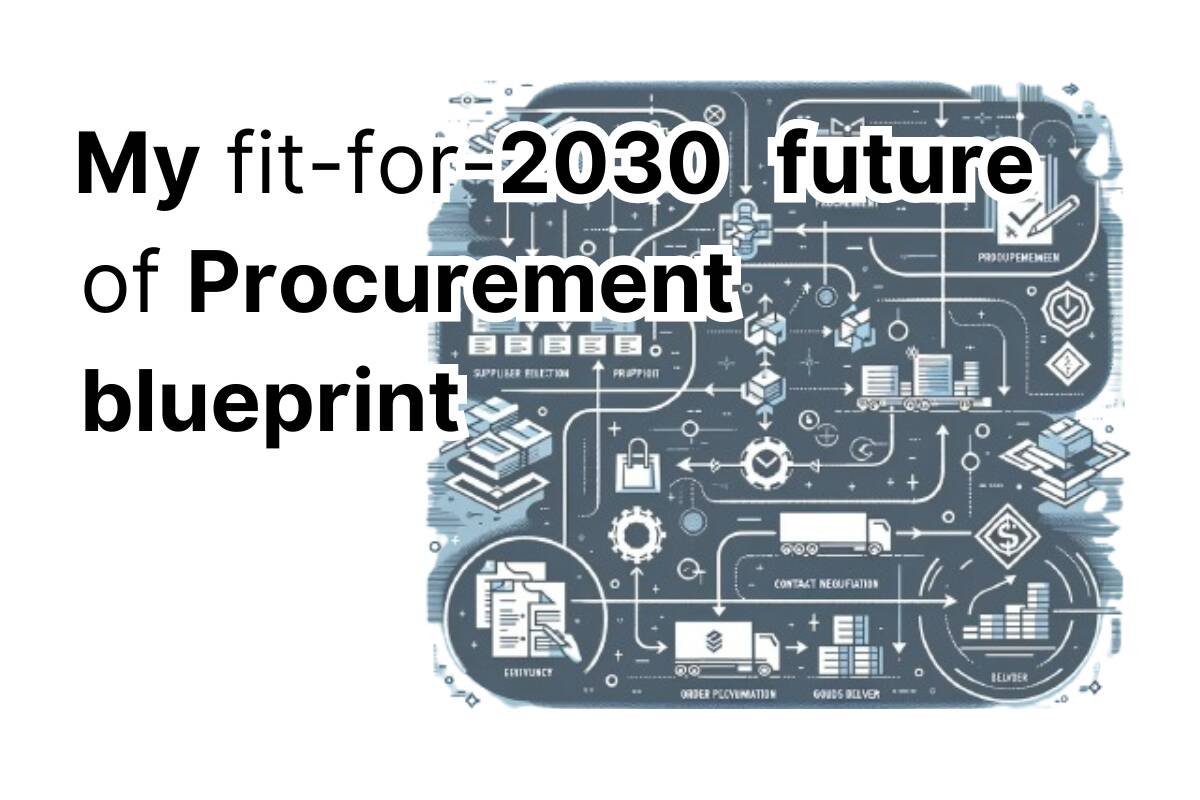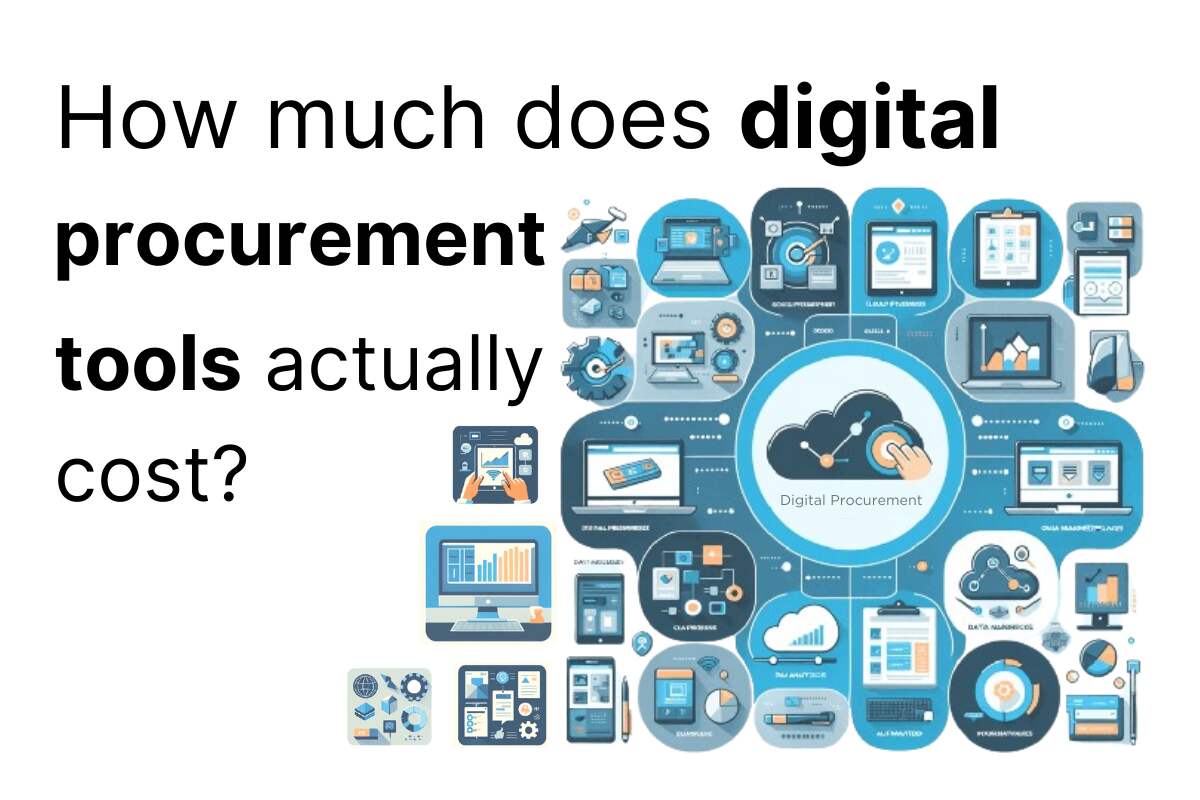Over the last few years there has been a fundamental shift in how the procurement function has been viewed within a business. Once seen as a back-office administrative function, procurement has rightly moved into the spotlight. To maintain our place in the spotlight, these digital procurement software platforms must optimise the user experience for the end user. That applies to both your internal stakeholders and suppliers.
A whole new breed of procurement tech platforms have sprung up since the outbreak of the pandemic. All of them in one way or another seek to raise procurement’s status to being a strategic business partner. To do this, our function must become collaborative, innovative and dynamic.
User experience lies at the heart of this.
Why must Procurement Tech consider User Experience?
Procurement professionals don’t want to be seen as a paper shufflers and order blockers. They want to streamline the process and improve the experience for all.
Enterprise Resource Planning (ERP) systems, such as SAP and Oracle, really have the needs of sales, production planning and finance at their core. These systems can often feel archaic and rigid for managing procurement functionality. The requisition and approval process often takes too many steps to complete. It’s design and feel is clunky and dated.
Getting stakeholder buy-in requires a modern UX. This is sadly missing from ERP systems, as well as some of the legacy source-to-pay suites. This can result in users bypassing internal processes and systems. When they need to urgently buy something, there’s no time for cumbersome systems and a lengthy, administrative P2P process.
Today’s procurement process should be designed around digital tools that work alongside your necessary internal compliance processes. However, the end user and the supplier must also be placed at the centre of the user experience.
To highlight this, let’s look into the source-to-pay (S2P) process to provide a working example.
What are the 4 stages of the S2P process?
You should consider these 4 steps of the operational purchasing process when considering tools and applications to improve UX.
1. Identify the need
The process will always start with the ‘need’. An organisation/stakeholder recognises the need to procure goods or services. He / she then either prepares a business case or confirms that they have the available budget to do so. The requirements are written into a request for quotation (RFQ), if the goods or services are above a certain value.
2. Supplier evaluation and selection
Once the suppliers have applied to quote/tender, the buyer must examine the responses and identify a shortlist of potential suppliers. The object here is to reduce risk and maximise the value to the business.
3. Purchase order
As well as negotiating the best price for the goods or services, the buyer must review the terms and conditions. Once you’ve agreed these with the supplier, they will be either be written into a contract, or a Purchase Order (PO) will be issued. The PO will show your required deliverables such as price, specification and terms and conditions.
4. Delivery and Payment
The requestor will confirm receipt of the goods or completion of the services. If the buyer or requisitioner is happy that the obligations have been fulfilled, then payment is made.
How do these steps relate to user experience?
Now, imagine you are a maintenance engineer working for a company, and need to fix a packaging machine in one of the production plants. You identify a ‘need’. In this case, it’s a spare part that you need to buy.
Working through this 4-stage process would not be efficient for you as this engineer. Why? Because you have an urgent need, and this process is bureaucratic.
There is also a direct cost to the business in terms of impact on production and operational efficiency. The order delays due to the time it takes to walk a request through the authorisation and ordering process can result in loss of sales and, consequently, loss of profits.
If you work in IT or Marketing, this exact same problem could occur. Maybe you wish to hire a freelance software developer for a project, or buy some promotional items for an upcoming exhibition.
Let’s think about what could be identified to make the UX of the procurement process easier for each of these users?
What is a good user experience in procurement?
We now live in a world that is driven by user experience in our personal and professional lives. Technology has become more intuitive and user friendly, making our lives easier.
Just think how Amazon makes it so easy for us as consumers to make a purchase. Then, look at how difficult it often is to buy something at work in most large organisations.
For a procurement system to be successful, it needs to allow your stakeholders or end users (the engineer in this example) to focus on their job. This is done by giving them an easy end-to-end buying experience. In other words, they must be able to order what they need quickly and easily, and return to work.
But, it must also do this without sacrificing the spend management and visibility required by procurement and finance leaders.
Look at the current system and ask:
- Where could we eliminate, automate or delegate any of the current process?
- What digital tools are available that could work alongside the internal systems or process, but improve the UX?
- How do we ensure users adopt and work with the new system, instead of bypassing the process and creating a maverick spend problem?
What are the main criteria to ensure good user experience?
Let’s look at four key features that are present in systems which prioritise UX.
1. Simplicity
Any new process or system should place the user at the centre of the design. This will in turn increase both adoption and acceptance. It needs to be easy to navigate, smooth and intuitive. Nobody wants to use clunky, hard to follow software.
It should offer an uncluttered screen with fewer features and require minimal input to find the information required. It should give visibility and tracking of requests. And importantly, it needs to be simple and straightforward to learn. You shouldn’t need extensive training needs or designated “super users”.
2. Performance
For a new system to work and be adopted by the business, it must be effective for the needs of the user. It should ultimately save you time as a user, and help you arrive at decisions faster.
This could be something as simple as a mobile app-friendly catalogue of pre-approved products and prices. This would enable our engineer in the last example to order his spare part in just a few clicks. This both saves the engineer time, and also gives him ownership and visibility of his order.
It also allows you as a procurement professional to spend your time on more value-added strategic activities. Instead of clerical tasks, you can now pursue contract negotiations, supplier management and developing your stakeholder relationships.
3. Data
You should be able to obtain a suite of data points in just a few clicks. This could be specification and warranty information, images, datasheets, stock levels, delivery times and commercial data to help guide the user’s supplier selection.
Department and project managers may also need departmental expenditure and remaining budget allocation. In procurement, you will ideally have visual presentation of supplier spend analysis, and a central database of contracts. Accounts payable would prioritise invoice status and supplier account information.
4. Personalisation
Your digital procurement software should be configurable according to the end user’s needs. Nobody wants to spend their time wading through information that is not relevant to them.
An engineer who needs to order a widget to fix his machine will have a very different system requirement to a departmental head or a finance professional.
Some users will have spend authorisation and administrator rights to generate reports containing financial data. Others will just be able to place requisitions, confirm deliveries and approve invoices.
The ability to organise the content according to a user’s needs will improve overall adoption rates. Consider a mobile app for non-office-based employees. Regular users should be able to see their frequently requested products first, or to sort by recent order history.
Do your departmental heads run the same transaction or report each time? Then, they should be able to access this as a standard one-click button.
Conclusion: Keep procurement tech simple, and increase user adoption
Procurement technology needs to solve complex business challenges with a user interface that makes it simple to use.
Yes, it needs to serve the purposes of procurement and finance. But, more importantly, it must also serve those who occasionally purchase goods and services. And, of course, it must be a system that is easy for suppliers to register onto and navigate too.
Each will have their own specific UX requirements. By having a system that focuses on good user experience, the business will benefit from better collaboration, performance, and efficiency.


